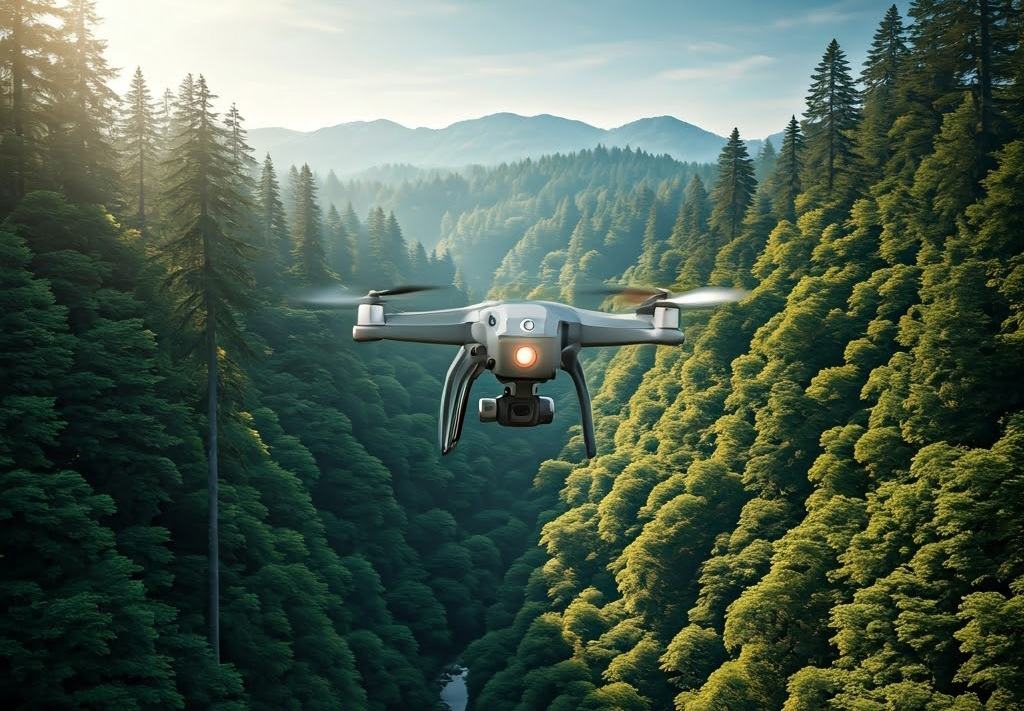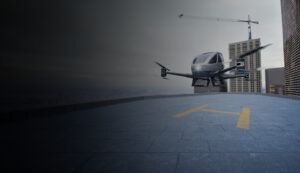A Cleaner, Greener Future
As cities and industries worldwide grapple with the increasing urgency of climate change, the need for sustainable technologies has never been more critical. Commercial drones are emerging as a powerful tool in the fight against climate change. Drones are helping cities and industries transition to more sustainable operations by reducing carbon emissions, alleviating traffic congestion, enhancing urban planning, and contributing to conservation efforts.
Cities that invest in drone infrastructure and smart management systems today will be better positioned to lead the charge toward a more sustainable world tomorrow. By incorporating electric-powered drones into sectors such as logistics, healthcare, and emergency services, cities and businesses can drastically reduce their environmental impact while improving efficiency.
With the help of smart software solutions like HoverSafe, cities can maximize the environmental benefits of drone technology, ensuring that their drone operations are efficient and eco-friendly.
Reducing Carbon Emissions with Electric-Powered Drones
Traditional transportation systems, mainly fossil fuel-dependent, significantly contribute to carbon emissions. Delivery trucks, cars, and even some public transportation emit significant greenhouse gases, contributing to air pollution and climate change. In contrast, many commercial drones are powered by electricity, making them a cleaner alternative to traditional vehicles.
Drones are increasingly used for deliveries, inspections, and other services that typically require ground-based vehicles. By shifting these tasks to drones, cities can reduce the number of vehicles on the road, reducing fuel consumption and lowering emissions.
A Significant Reduction in Emissions
Studies have shown that using drones for delivery services can reduce fuel consumption and emissions by up to 40%. This is particularly impactful in urban areas, where traffic congestion exacerbates pollution. Drones, which fly above the cityscape, bypass traffic entirely, reducing the need for additional fuel during peak congestion.
For example, logistics companies like Amazon are exploring drone delivery systems that can replace many short-distance truck deliveries. Using electric-powered drones instead of gasoline-powered trucks can dramatically reduce the environmental impact of these deliveries. As drone technology evolves, it will only become more efficient, minimizing its environmental footprint.
Alleviating Traffic Congestion and Reducing Air Pollution
Urban traffic congestion is a source of frustration for drivers and a significant contributor to air pollution. In cities where delivery trucks, rideshare vehicles, and personal cars crowd the streets, emissions levels rise sharply during peak hours. Drones offer a unique solution by removing delivery vehicles from the road entirely.
Fewer Delivery Trucks on the Road
One key environmental benefit of commercial drones is their ability to reduce the number of delivery trucks required to transport goods. By conducting deliveries via drones, companies can significantly reduce the volume of road traffic, leading to fewer emissions and less air pollution. This is especially important in cities where air quality is already a major concern.
For example, instead of sending multiple trucks to make dozens of small deliveries within a crowded city, a fleet of drones could complete the same task faster, with less energy and without contributing to road congestion. This shift reduces emissions and makes cities cleaner and healthier places to live.
Enhancing Urban Green Spaces and Sustainable Infrastructure
Introducing commercial drones also presents opportunities for urban planners to rethink city layouts and prioritize green spaces. With fewer vehicles, cities can reduce the need for large roads and parking structures, making room for parks, pedestrian pathways, and bike lanes.
Reimagining City Planning
Urban planners are increasingly focused on creating greener cities, and the use of drones aligns with this goal. As drone usage grows, the need for extensive road networks may decrease, freeing up space for eco-friendly initiatives. Fewer delivery trucks and rideshare cars on the road mean that city planners can reallocate valuable real estate to parks, urban forests, and other green spaces that contribute to biodiversity and improve air quality.
In addition, cities that adopt drone-friendly infrastructure—such as vertiports (designated drone landing and recharging sites)—can better manage their urban landscapes by strategically placing these facilities in areas that minimize disruption to natural ecosystems while optimizing drone operations.
Optimizing Energy Use with Smart Drone Infrastructure
Commercial drones are more than delivery tools; they are a key component of smart, connected infrastructure that promotes energy efficiency. With advanced software solutions like HoverSafe, cities can manage real-time drone infrastructure and operations, reduce energy use, and ensure that drones operate efficiently.
Smart Recharging and Maintenance
Energy efficiency extends beyond flight paths. Drones must also be recharged regularly, and managing this process sustainably is crucial. Cities can set up drone recharging stations powered by renewable energy sources such as solar panels or wind turbines, ensuring that the environmental benefits of drone operations extend beyond their use in the air.
HoverSafe’s platform allows city managers to monitor drone fleets and manage the logistics of recharging and maintenance. This ensures that drones are recharged at the right time and place, avoiding energy waste and contributing to overall sustainability goals.
Environmental Monitoring and Conservation Efforts
Beyond their use in logistics and transportation, drones are playing a growing role in environmental monitoring and conservation. Equipped with advanced sensors, drones can gather critical data on ecosystems, wildlife, and natural resources, allowing cities and conservationists to make more informed decisions about sustainability efforts.
Monitoring Air and Water Quality
Drones with air quality sensors can monitor pollution levels in real-time, providing cities with valuable data to address environmental challenges. They can also monitor water quality in rivers, lakes, and coastal areas, detecting contaminants or ecosystem changes before they become major issues.
Supporting Reforestation and Conservation
In remote areas where ground-based monitoring is difficult, drones can be used to survey land, assess the health of forests, and even assist in reforestation efforts. Some companies have developed drones capable of planting seeds in hard-to-reach locations, accelerating reforestation projects, and helping to combat deforestation.
Promoting Sustainable Supply Chains
As companies strive to make their supply chains more sustainable, drones offer a key solution for reducing transportation’s carbon footprint. By incorporating drones into their logistics networks, businesses can streamline operations, reduce energy use, and improve sustainability.
Lowering Energy Costs and Emissions
Companies that adopt drone technology for deliveries and inspections can lower their energy costs by reducing the number of traditional vehicles needed to transport goods. This cuts operational expenses and contributes to global efforts to reduce carbon emissions.
Drones are particularly effective for short-range deliveries, where traditional delivery trucks are less efficient. By replacing these short trips with drones, companies can significantly lower their environmental impact and enhance their green credentials.
Leading the Charge Toward a Sustainable Future
As the world continues to prioritize sustainability and the reduction of carbon emissions, commercial drones are emerging as a transformative solution. By integrating electric-powered drones into industries such as logistics, urban planning, and environmental conservation, cities and businesses can improve operational efficiency and make significant strides toward a greener future. Reducing emissions, alleviating traffic congestion, and promoting green spaces underscores drones’ powerful impact on urban sustainability.
HoverSafe enables cities to optimize drone operations with smart infrastructure and energy-efficient management, maximizing the environmental benefits. As drone technology continues to evolve, its potential to drive positive environmental change will only grow, paving the way for a cleaner, more sustainable world. Adopting commercial drones is more than a technological advancement – it’s a vital step in building the eco-friendly cities of tomorrow.


